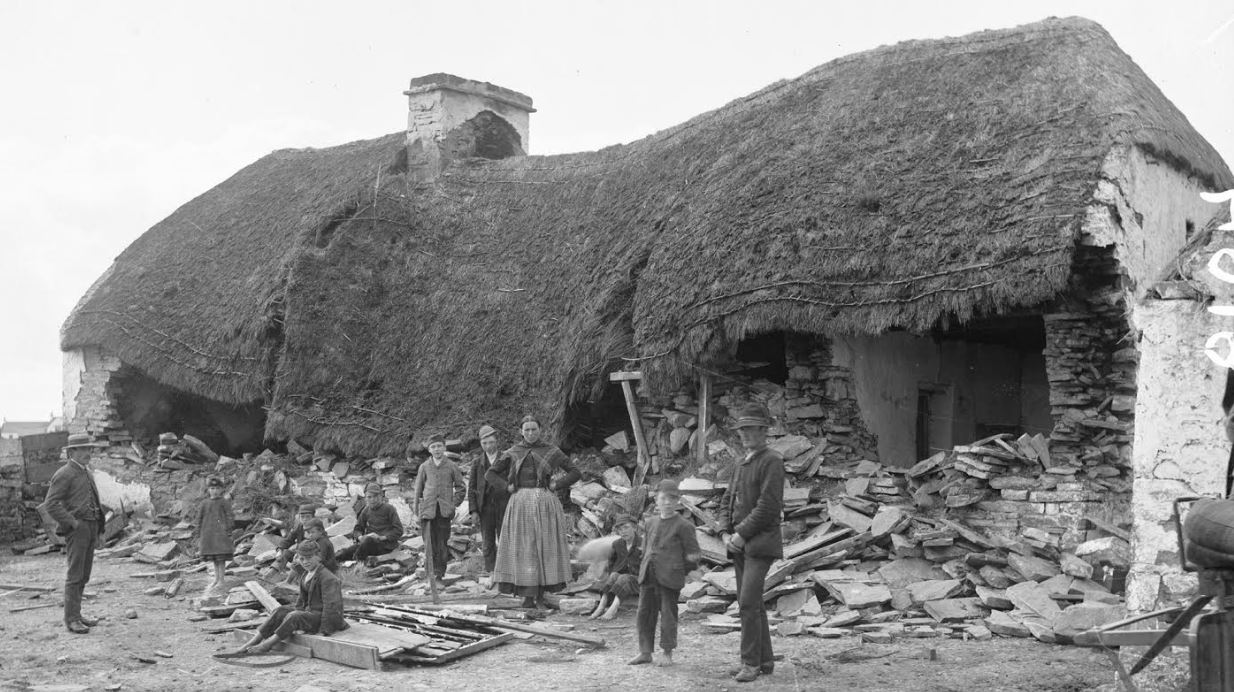The Great Famine marked Ireland forever
(In the December issue of Celtic Life International, I write about ranging around Ireland while exploring the many dimensions of the Irish famine.)
It’s not all that far to Tipperary – not if
you start in Kilkenny and make for the Famine Warhouse at the eastern edge of that
song-famous county. We simply drove west for about 30 km, which included a
short detour because we took a wrong turn and ended up exploring a one-lane road
with a ridge of grass down the middle. The Famine Warhouse is the site of an
1848 incident known as the Battle of Widow McCormack’s Cabbage Patch – an episode
that to me represented a fourth and final dimension of the Great Famine.
By this time, three weeks into our latest
Irish ramble, and somewhat to my surprise, I had come face to face with the
politics, the science, and the human suffering of the Great Hunger. I saw the
Warhouse as symbolizing the active response – the rebellion. But I have gotten
ahead of our wanderings around southeastern Ireland, an area that, during the
famine years, fared relatively well. Hence my surprise.
In Dublin we were taken, Sheena and I, with the
power of the sculpted famine figures on the north bank of the River Liffey. We spent
time at EPIC: The Irish Emigration Museum. And we poked around the Jeanie
Johnston, the replica famine ship that I wrote about last issue.
But the political dimension didn’t manifest
until we went to the Irish Potato Famine Exhibition, mounted upstairs at the St.
Stephen’s Green Shopping Centre. The exhibition, which included posters, a
15-minute video/DVD, and an hour-long show of panel stills, delivered an
overview before turning to specifics. Between 1845 and 1852, approximately one
million Irish people died of starvation or disease and two million fled the
country, many of them coming to Canada.
Tens of thousands of farmers were forcibly
evicted by absentee landlords spouting the free-market doctrine of “laissez-faire.”
One photographic image, from County Clare in the west of the country, showed
the house of Mathia Magrath “after destruction by the Battering Ram.”
Some scholars present slightly different
numbers, saying 1.5 million died in Ireland and 1.5 million emigrated. Either
way, the three million total explains why some have described the Irish Famine as
the worst human disaster of the 19th century – a devastation exceeded
in the 20th century only by the Jewish holocaust.
During the decade that followed the Great
Hunger, another two million people departed from Ireland. Today, largely as a
result of all this, the Irish diaspora encompasses 70 million people around the
globe. Among them we find almost five million Canadians and 35 million
Americans.
But the politics. This exhibition points a
finger at the policies and attitudes of British Parliamentarians, notably Lord
John Russell, prime minister from 1846 to 1852, and Charles Trevelyan, the assistant
treasury secretary who handled the Irish file. A narrator explains that
Trevelyan “believed that God and market forces were on the same side” and that
the Irish Famine was “a visitation of God” and a way of solving an
overpopulation problem. Bigotry and convenient, self-serving myopia.
After driving due south along the coast for
155 km, we set up in the lively seaport-town of Wexford, cornerstone of
Ireland’s “Ancient East” and traditionally a centre of resistance to British
rule. At nearby Johnstown Castle, a splendid gem of gothic revival architecture,
we walked along beside an ornamental lake and admired a Victorian walled
garden. The surprise came when we wandered into the Irish Agricultural Museum,
which is housed in refurbished farm buildings. Here we encountered another Great
Famine Exhibition – this one lacking a video but comprehensive and notable for its
scientific rigor and detail.
Sailing ships from the Americas brought the
potato to Europe late in the 16th century. It became a diet staple,
especially in agricultural Ireland. Potato blight followed the same route and reach
continental Europe in 1843. Blight is a fungal disease that attacks leaves and
tubers. Spread by spores in the air, it turns up as a small dark spot on a potato
leaf and wreaks havoc. Seed tubers sustain the fungus through winter and so infect
a still larger crop the following spring.
The Johnstown exhibition is replete with
charts and graphs illustrating and analyzing everything from the decline of
small farm holdings to the prevalence of various Famine-related diseases, among
them typhus, Asiatic cholera, and scurvy or “black leg.” Up to 85 per cent of
those who died during the Great Hunger did so not from starvation but from
fever or disease.
Here, too, we read of government-sponsored workhouses,
where conditions were so miserable that, by August of 1846, only 43,000 people
had taken refuge within. As the Famine intensified, these penitentiary-like
buildings came to accommodate hundreds of thousands of people, desperate for
the three sparse meals a day they could earn by toiling on make-work projects,
usually roads. When the famine ended, 40 per cent of the children who entered
the workhouses had been orphaned or deserted.
By the time we reached Kilkenny, that medieval
town 80 km northwest of Wexford, we thought we understood the human suffering
induced by the Famine. But a visit to the sparkling MacDonough Junction
Shopping Centre taught us otherwise. In 2005, developers set about creating
this contemporary shopping centre out of a prison-like workhouse from the
mid-19th century. . . .
(To read the complete article, pick up the December issue of Celtic Life International. To learn how the widespread famine impacted Scotland, and especially the Hebrides, check out my latest book, Flight of the Highlanders: The Making of Canada.)


